Navigating Dubai's Metro and Tram: A Detailed Guide
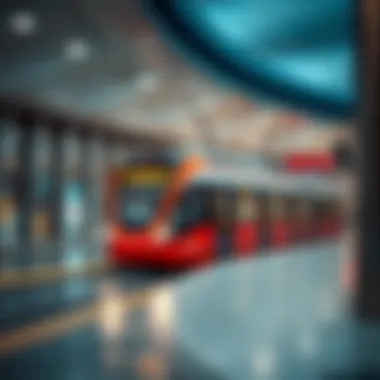
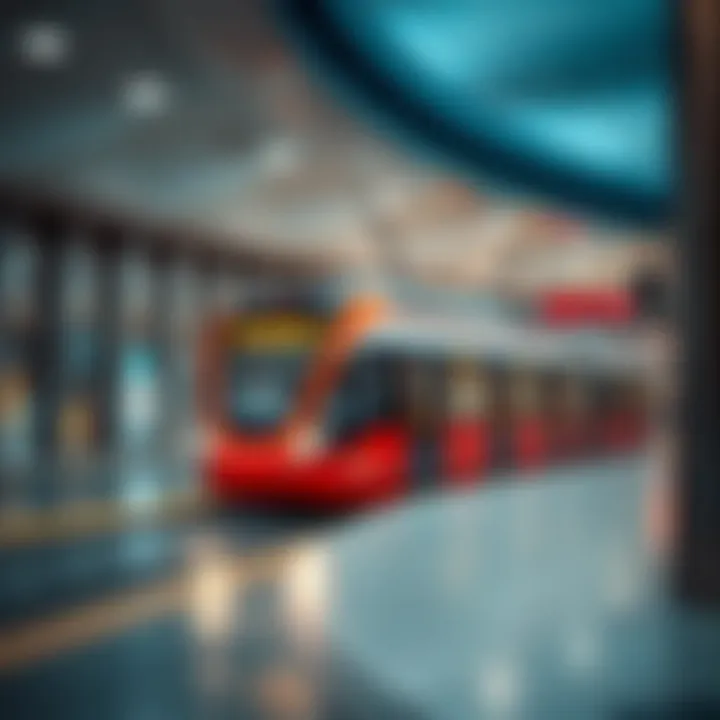
Intro
Dubai stands as a testament to rapid urban transformation, where the skyline meets the desert in an embrace of innovation and luxury. Central to this urban metamorphosis are the metro and tram systems, which have emerged not just as mere means of transportation, but as vital arteries fueling economic growth and accessibility. In a city that never stops evolving, these networks play a crucial role in shaping the future landscape of Dubai. They facilitate movement for residents and tourists alike while connecting vital areas of commerce and leisure. This guide seeks to explore the intricate details of these transportation systems, offering insights tailored for investors, property managers, and real estate agents who are keen on understanding the infrastructural dynamics at play.
The expansion of the metro and tram lines signifies a strategic investment in urban mobility, making it essential for stakeholders to grasp the full spectrum of impacts on real estate and urban development. With residential neighborhoods like Dubai Marina and Business Bay gaining prominence due to their proximity to these transport lines, understanding this connection is more than just academic; it is about recognizing opportunities in a shifting marketplace.
From evaluating prime neighborhoods to pinpointing upcoming developments that are poised to rise, investors can greatly benefit from a comprehensive view of how the Dubai Metro and tram systems influence property values and urban accessibility. An in-depth analysis of market trends, current conditions, and future projections will further empower stakeholders to navigate the lively real estate terrain in Dubai, ensuring informed decision-making as the city continues its march into the future.
In the following sections, we'll delve deeper into specific investment opportunities, market trends, and how they intertwine with the legacy of the Dubai Metro and trams, presenting a roadmap for those eager to engage with this vibrant urban tapestry.
Intro to Dubai's Public Transport Network
Dubai's public transport network is a cornerstone of the city's intricate fabric, transforming not just the way people move but how they interact with the sprawling metropolis itself. With the rapid growth and the lofty ambitions of the UAE, efficient transport systems provide essential connectivity, playing a pivotal role in the socio-economic landscape. This section dives deep into the significance of the network—setting a platform for discussing the metro and tram systems which epitomize modern infrastructure.
The Importance of Efficient Transport Systems
An efficient transport system is like the backbone of any urban environment, especially in a city that is constantly evolving like Dubai. It fosters economic growth by providing reliable connections that ease the daily commute for workers and families alike. Moreover, it enhances the overall quality of life, allowing residents to navigate through the city without waging daily battles with traffic congestion or the hassle of parking.
The development of a well-functioning transport network can attract businesses, leading to job creation and investment opportunities. This chain reaction, catalyzed by effective mobility solutions, enables the city to expand its horizons. Investors keen on real estate must recognize how accessibility drives property values. Areas adjacent to metro stations often see inflated demand due to the convenience offered, reinforcing the need for a robust public transport system.
Overview of Metro and Tram Services
Dubai boasts a sophisticated metro and tram system that represents a blend of world-class engineering and cutting-edge technology. The metro, with its sleek design and automated operations, runs across the city, connecting key areas from the bustling downtown to the serene suburbs. It is crucial in alleviating traffic woes that plague growing urban areas.
The tram network complements the metro by providing seamless access to neighborhoods that aren’t easily reached by other modes of transport. This connection between rail systems is a feature that enhances user experience and caters to a growing population reliant on public transit. The integration between the metro and the tram system is designed to make commuting smoother and faster, minimizing waiting times and facilitating easy transfers for passengers.
Both services are equipped with modern facilities to cater to the needs of a diverse user base, including special provisions for those with limited mobility.
In sum, the introduction of the metro and tram system is not just a transportation upgrade; it's a reimagining of urban mobility in Dubai, responding to the demands of a rapidly growing urban landscape.
"A city is not an accident but the result of coherent visions and aims."
Overall, this public transport network serves as a vital component in the city's grand design, underlying the strategic vision of Dubai's urban planners.
Dubai Metro: Structure and Connectivity
The Dubai Metro plays a vital role in enhancing the urban fabric of this thriving emirate. As a cornerstone of the city's transportation network, it not only aids in alleviating road congestion but also serves as a catalyst for economic growth. The remarkable design and strategic connectivity offered by the metro system contribute significantly to easing the daily commute of residents and connecting key areas of the city.
Lines and Stations
The Dubai Metro features two main lines: the Red Line and the Green Line. The Red Line spans approximately 52 kilometers, connecting areas from Rashidiya to Jebel Ali, while the Green Line, shorter at about 23 kilometers, links Dubai Creek to Al Jaddaf.
Within these lines, the metro boasts 47 stations, strategically spaced to ensure maximum accessibility. Noteworthy stations include the Burj Khalifa/Dubai Mall, which places riders within reach of one of the world's tallest buildings and premier shopping locations. Another significant stop is the Dubai Marina station, which is perfect for both residents and tourists alike, showcasing Dubai's coastal lifestyle.
Each station is equipped with essential features, elevators, and escalators to facilitate easy movement. Accessibility stands you in good stead in the metro's design, ensuring everyone can navigate without hassle. This connectivity fosters not just interaction among commuters but also fosters economic zones by linking commercial hubs and residential areas.
Operational Hours and Frequency
Understanding the operational hours of the Dubai Metro is key for both daily commuters and occasional users. Generally, the metro operates from 5 am to midnight, with extended hours on weekends. This schedule accommodates a varied crowd, whether it's early risers or night owls needing to travel.
The frequency of trains varies by time of day. During peak hours like morning and evening, trains can arrive every two to three minutes, ensuring that commuters aren’t left stranded for too long. For the more leisurely hours, trains run every 7 to 10 minutes. This smooth operation is crucial, especially in a busy metropolis like Dubai, where time is of the essence.
Ticketing and Pricing
Navigating the pricing structure of the Dubai Metro doesn't have to be daunting. The system employs a fare system based on distance traveled, with a standard journey costing between AED 3 and AED 8. Passengers can opt for a Nol card, which allows for convenient cashless travel across multiple modes of public transport, including the tram. This flexibility is especially appealing to investors or those considering the long-term feasibility of commuting.
Different types of Nol cards cater to various needs, from regular users needing a monthly pass to one-time visitors wanting a convenient way to travel.


In summary, the Dubai Metro is not only a marvel of engineering but also a critical element in the city’s transport ecosystem. By understanding the structure, operational hours, and ticketing options, investors and professionals can better appreciate the efficiencies and potential benefits of this modern transportation system.
"The success of Dubai's Metro reflects a larger movement towards sustainable urban development and enhanced transport connections."
For more detailed insights, visit Wikipedia: Dubai Metro or check out Britannica's overview of Dubai's infrastructural advancements.
Dubai Tram: An Overview
The Dubai Tram system serves as a vital component of the Emirate's public transport offerings, integrating seamlessly with the vast metro network to ensure smooth connectivity across the cosmopolitan city. With the city's rapid growth and increasing visitor numbers, the tram is a game-changer; facilitating not just ease of travel, but also contributing to the ongoing urban development that characterizes Dubai. This section elaborates on the tram lines, key stops, integration with the metro, and accessibility features—all of which are essential for understanding the tram's significance in the broader transport ecosystem.
Tram Lines and Key Stops
The tram network stretches across several key plots of Dubai, primarily focusing on areas with high pedestrian traffic. Notably, the Route T1 offers stops in prominent locales such as Jumeirah Beach Residence, a popular tourist location, and Al Sufouh, providing quick access to the high rises that pepper the skyline.
When utilizing the tram, travelers can expect the following main stops:
- Al Sufouh: An essential hub connecting residential areas and commercial zones.
- Dubai Marina: A popular junction for tourists, serving access to various leisure activities.
- Jumeirah Beach Residence 1: This stop enables quick beach access, making it a must for sunshine seekers.
- Jumeirah Beach Residence 2: Another area that enhances the tram's reach to tourist hotspots, ensuring a steady stream of visitors.
These locations highlight the tram's role in connecting some of Dubai's most vibrant neighborhoods, directly correlating its routes with real-time demands of residents and visitors alike.
Integration with Metro Services
One of the tram's standout features is its admirable integration with the Dubai Metro services. Travelers can easily switch between the two systems, allowing for a fluid transit experience across different parts of the city. The key interchange station is located at the Dubai Marina Station, where commuters can hop on the metro and travel to far-reaching stations such as the Dubai International Airport.
This fluidity is marked by a few integral benefits:
- Timely Transfers: Synchronization between tram and metro schedules helps minimize waiting time during transfers.
- Single Payment System: Thanks to the Nol card—Dubai's multi-use travel card—passengers can use the same fare system for both tram and metro services, simplifying the payment process.
- Enhanced Mobility: With further extension plans underway, the integration ensures that an increasing number of neighborhoods will be connected, promoting urban mobility.
Accessibility Features
From the outset, the Dubai Tram has prioritized accessibility within its design and operational philosophy. Every tram station is equipped with ramps, tactile guidance paths, and audio announcements, ensuring that all passengers, regardless of physical ability, can navigate the system with ease. Additionally, the trams themselves feature spaces specifically designated for wheelchair users.
Key accessibility features include:
- Elevators at Stations: Providing seamless access for individuals with mobility challenges.
- Wheelchair-Friendly: Adequate space and facilities aboard trams ensure a comfortable riding experience.
- Visual and Audio Aids: Information is made accessible for those with visual and hearing impairments, offering announcements in various languages—a nod to Dubai's multicultural essence.
By considering all users, the tram not only enhances its utility but also enriches the overall public transport experience. This paving the way for a more inclusive city.
Navigating the Maps: Tools for Commuters
In a bustling metropolis like Dubai, clear navigation is paramount. The comprehensive maps provided for the Metro and Tram systems serve as essential tools for both residents and visitors. Mastering these maps not only increases efficiency when commuting but also enhances the overall travel experience. When one understands the layout and connectivity options, it can dramatically reduce travel time and elevate convenience, allowing commuters to focus on their day-to-day activities.
Understanding the Metro Map
The Dubai Metro map is laid out with clarity, offering a vibrant overview of the interconnected lines and stations. Each line is color-coded, making it easy to discern between the Red and Green lines at just a glance. Notably, the map accommodates both first-time users and seasoned commuters. On the Red Line, for instance, key stations like Burj Khalifa/Dubai Mall and Ibn Battuta are prominently marked, highlighting major attractions and commercial zones.
Also, it helps to pay special attention to interchanges. For instance, the Union Station is a critical hub where users can switch between the Red and Green lines. Understanding such connections not only contributes to a seamless journey but also opens up a multitude of destinations without unnecessary delays. Maps available in different languages reflect Dubai's multi-culturalism, promoting accessibility for everyone.
Utilizing the Tram Map
Overlapping with the Metro system, the Tram network in Dubai is designed to complement the Metro, especially in areas like Dubai Marina and Jumeirah Beach Residences. Tram stops are clearly labeled, and their proximity to the Metro stations allows for easy transfers, making multi-modal travel simple. The Tram map provides detailed overlays indicating these connections.
A unique feature is the network's circular route. It allows seamless travel along the waterfront, fostering not just connectivity but also a scenic route. When assessing locations like the Dubai Marina Mall or the beach, it's beneficial to check which Tram stops are closest. This ensures that commuters can make informed decisions based on their desired destinations.
Mobile Applications for Real-Time Navigation
In today’s digital age, leveraging technology is crucial for navigating public transport. Several mobile applications enhance the experience of using the Metro and Tram systems in Dubai. Apps like RTA Dubai offer real-time information, including arrival times and service alerts. This is crucial during peak hours when delays can unexpectedly occur.
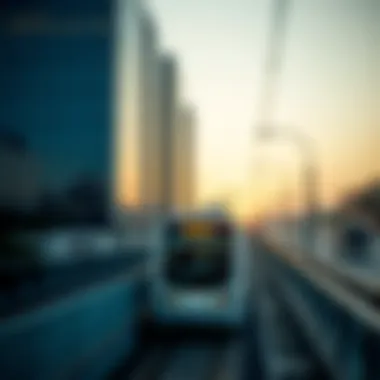
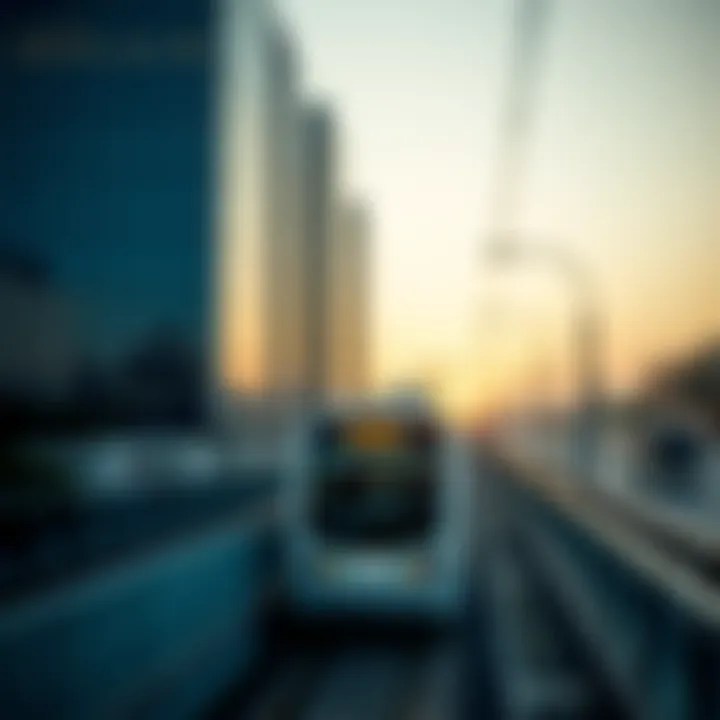
Moreover, these applications support route planning based on user preferences. Once an individual inputs their starting point and destination, the app generates the most efficient path, factoring in all available transit modes, including walking distances to respective stations.
Additionally, the integration of ticketing options within these apps allows users to purchase and manage their travel passes, reducing the time spent at kiosks and improving overall accessibility. Being equipped with the right tools not only enhances confidence in navigating the system but supports a user-friendly commuting environment.
"The Metro and Tram maps are more than just navigational aids; they are gateways to exploring the dynamism of Dubai."
Together, the Metro and Tram maps coupled with mobile applications form a comprehensive navigational framework that significantly eases the commuter experience. For investors and property managers, understanding these tools can offer insights into client expectations and the importance of accessibility in the real estate landscape.
Impact on Real Estate Development
The relationship between public transport systems and real estate development is a significant topic, especially in a rapidly growing metropolis like Dubai. The Dubai Metro and tram system aren’t just conduits for commuting; they are vital arteries that influence property values, urban planning, and future developments. With the swift expansion of these transport networks, investors and property managers need to have their fingers on the pulse of how these changes shape the real estate market.
Proximity to Metro Stations
A critical aspect of the real estate landscape in Dubai involves the proximity of properties to metro stations. Properties located within a short walking distance to these stations tend to have higher demand from both buyers and renters. This trend can be attributed to various factors:
- Convenience: Easy access to the metro means shorter travel times. Residents prioritize this convenience when selecting homes.
- Higher Rents: Landlords often increase rental prices for properties near metro stations due to the perceived value of accessibility.
- Buyer Appeal: Potential buyers view proximity to public transport as an attractive feature, especially young professionals and expatriates.
Locations like Dubai Marina and Downtown Dubai exemplify this pattern. Rapid Transit solutions like the metro turn these areas into vibrant hubs, driving up property desirability.
Tram Accessibility and Property Values
Tram systems, too, play a role in augmenting property values. The extension of tram lines facilitates easier access to previously less desirable neighborhoods, breathing new life into them. Here’s how tram accessibility correlates with property values:
- Enhanced Mobility: When tram networks emerge, they link residential areas with commercial centers, significantly enhancing mobility options for residents. This is especially evident near areas like Jumeirah Beach Residence (JBR), where tram access to entertainment and shopping promotes property desirability.
- Investment Surge: Areas served by tram lines typically observe a surge in investments from both residential and commercial entities. More amenities draw more people, pushing property values higher.
- Market Appeal: The integrated nature of trams with other transport systems, like the metro, makes properties nearby increasingly appealing to potential buyers.
Emerging Neighborhoods and Investment Potential
As the city’s transport infrastructure continues to grow, new neighborhoods arise around planned metro and tram stations. Investors and property developers must keep an eye on these emerging areas, as they may offer lucrative opportunities:
- Growth Spots: Locations such as Dubai South are becoming hotspots due to upcoming transport options like metro expansions. Here, the investment potential is high, with properties likely to appreciate once the infrastructure is in place.
- Diversification of Options: Investors can benefit from looking beyond the traditional hubs. Emerging neighborhoods may offer more affordable properties that could rise in value as the area develops, owing partly to improved transport links.
- Government Initiatives: With governmental incentives aimed at expanding public transport networks, areas that integrate well are poised for sustainable real estate growth.
"A well-connected city is not just about roads and rail; it’s about the growth opportunities they foster."
For a more detailed look at Dubai’s transport infrastructure and its implications for urban development, explore additional resources such as Wikipedia and Britannica.
Understanding these factors can provide insights into market behavior, offering strategic advantages for investors, agents, and property managers alike.
User Experience and Feedback
User experience plays a pivotal role in how well the Dubai Metro and tram system meet the needs of its users. Understanding feedback from commuters is indispensable for the growth of any transport network. It helps in identifying what works, what doesn’t, and what can be improved. For investors, property managers, and real estate agents, understanding user satisfaction is critical, as it directly influences the value of properties in proximity to transport services.
Customer Satisfaction Levels
Customer satisfaction levels reflect how well the metro and tram systems are performing. According to various surveys, satisfaction seems to be relatively high among commuters, particularly regarding cleanliness and safety. Many users appreciate the time-efficiency of the metro lines, which are often faster than traditional road transport, helping resolve the notorious traffic congestion in Dubai. Moreover, the spaciousness of trains and platforms contributes significantly to a comfortable travel experience.
- Punctuality: The metro's ability to stay on time enhances user satisfaction.
- Cleanliness: Regular maintenance of stations and trams instills a sense of safety and comfort.
Despite these positive indicators, there’s room for improvement. An area of concern is the perception of overcrowding during peak hours, which can be frustrating for users. Enhancing capacity could lead to even better satisfaction ratings.
Challenges Faced by Commuters
Though the system is largely effective, it is not without its challenges. Some commuters experience difficulties around overcrowding during peak hours, making the travel unpleasant. Additionally, there are reports of insufficient seating arrangements in trams and sometimes in metro trains. Commuters have also expressed concerns about the reliability of digital display boards, which occasionally show inaccurate information about train arrivals and delays.
- Peak Hour Congestion: A common complaint revolves around the increase in commuters, especially during rush hours.
- Digital Information Reliability: Inaccurate information can lead to frustration and mismanaged travel plans.
Furthermore, accessibility for visually impaired individuals has also been highlighted as a concern. While some efforts are being made to improve this aspect, feedback from users indicates there’s still a long way to go.
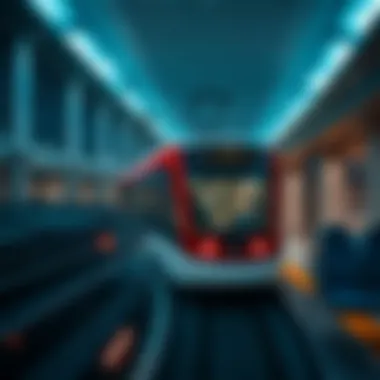
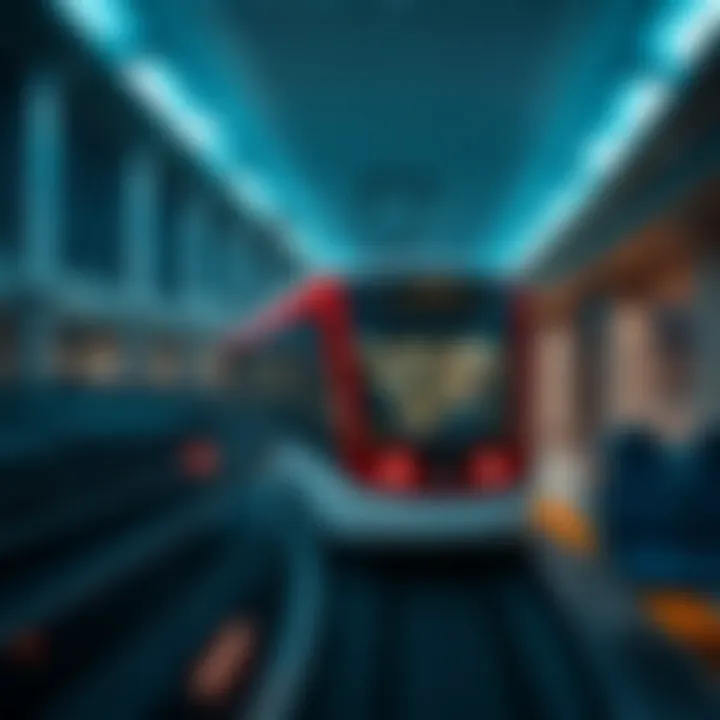
Suggestions for Improvement
To take user experience to the next level, several suggestions can be considered:
- Expand Train Capacity: Introducing longer train sets or increasing frequency during peak times can alleviate overcrowding issues.
- Enhance Digital Infrastructure: Regular audits and updates on the digital information systems can help ensure accuracy and reliability.
- Improve Accessibility Features: Investing in better solutions for individuals with disabilities will foster inclusivity in public transport.
- Customer Feedback Mechanism: Creating a more robust platform to gather and analyze user feedback can pinpoint issues quicker and improve systems more effectively.
Implementing these recommendations not only aims to improve commuter satisfaction but can also attract new users to the network, ultimately benefiting all stakeholders.
“The efficiency of a public transport system is only as good as the experience of its users. Listening to commuters is key to building a transport system that works for everyone.”
Future Developments and Expansion Trends
The transit landscape of Dubai is on the precipice of significant transformation. With the increasing population and economic growth, the importance of enhancing public transport through upcoming developments is paramount. Planning for the future is not just about adding more trains or trams; it’s about creating a cohesive network that integrates not only the metro and tram lines but also all modes of transport available in the emirate. This foresight ensures that Dubai retains its position as a world-class city while accommodating the needs of residents and visitors alike.
Upcoming Metro Lines and Extensions
Dubai's Metro system is set to expand with several new lines planned across the city. One key project on the horizon is the extension of the Red Line, which aims to reach pivotal areas such as Al Maktoum International Airport. This airport has long been envisioned as a key travel hub, and connecting it to the metro system enhances accessibility for both international travelers and locals.
Moreover, several new lines will target more outlying areas, extending the reach of public transport into suburban neighborhoods. This invites more people to rely on public transit, rather than private cars, reducing congestion on the streets. Fully operational, these extensions could offer:
- Improved mobility for workers commuting from distant locations
- Increased property values along new metro corridors, benefitting investors
- Environmentally friendly travel options that align with Dubai’s sustainability goals
Tram Network Growth Plans
In parallel with the metro expansions, the tram system is also witnessing growth. One major initiative includes the proposed Tram line to connect with the Expo 2020 site, as well as surrounding areas. This would not only ease the influx of visitors but also provide residents with greater options for intra-city travel.
Expanding the tram network includes additional stops in high-density residential zones, ensuring that more citizens can use this alternative mode of transport. Tram systems generally complement metro services well, providing short-distance connections. Potential benefits of tram network growth include:
- Accessibility to commercial and recreational areas, fostering economic activities
- Reduction of traffic as more people choose trams for short trips
- Encouragement of urban development around tram stations
Long-Term Urban Mobility Goals
The broader vision for urban mobility in Dubai encompasses not just expansion but the rethinking of how residents and visitors navigate the city. The government is working towards developing smart mobility solutions that integrate technology and public transport.
Key aims include:
- Reducing travel time for commuters through streamlined services
- Minimizing carbon footprints by promoting public transport over personal vehicle use
- Encouraging multi-modal transport solutions, integrating buses, trams, and metros seamlessly
The commitment to improving urban mobility can make Dubai stand out as a model for other metropolitan areas grappling with similar transport challenges.
In essence, the future of Dubai's transportation system is about building more than just lines and stations; it's about fostering a community where efficient, sustainable travel is the norm. By considering the needs of today while anticipating the demands of tomorrow, Dubai can continue to elevate its status as a leading global city.
Ending: The Role of Public Transport in Urban Development
In a rapidly growing metropolis like Dubai, public transport plays a pivotal role in shaping the urban fabric. The efficient operation of the Dubai Metro and Tram system not only eases the daily commute for thousands but also influences various aspects of urban development, notably in real estate and overall city planning.
Summary of Key Points
The journey through the intricacies of the Dubai public transport system reveals several critical points:
- Integration: The seamless connectivity between the Metro and Tram systems exemplifies the city’s commitment to easing mobility for residents and visitors alike.
- Real Estate Impact: Properties near transport hubs, such as Metro stations, often see higher demand and property values, indicating a strong link between accessibility and investment potential.
- User-Centric Design: Continuous feedback from users highlights the importance of maintaining user-friendliness in these transit systems.
- Future Growth: Plans for expanding both the Metro and Tram networks suggest a long-term commitment to developing a robust urban mobility framework and ensuring that Dubai remains competitive.
The summary of the article reflects not just the operational details but also encompasses the profound implications of Dubai's public transport strategy on urban development.
The Vision for a Well-Connected Dubai
Imagining Dubai’s future, one can see the ambitious plans shaping a well-connected city. The vision extends beyond mere transportation; it envisions creating a city where access is streamlined, reducing reliance on personal vehicles, thereby lessening traffic congestion.
Key Components of This Vision Include:
- Sustainable Transport Solutions: Efforts are underway to incorporate eco-friendly vehicles into the fleet, aligning with global sustainability goals.
- Expansion of Services: Additional Metro lines and tram stops are planned, which will further extend the reach of public transport and integrate it with other modes like buses and ferries.
- Smart Technology Integration: Utilizing smart city technologies to provide real-time updates for commuters and enhance overall user experience.
This ambitious roadmap is not just a pipe dream but actively pursued through infrastructural investments and strategic planning. For investors and property managers, the evolving transport landscape presents a wealth of opportunities, as proximity to efficient transport systems increasingly dictates property desirability.
Ultimately, the role of public transport in urban development is not merely functional; it serves as a catalyst for economic growth and community cohesion. As Dubai continues to grow and evolve, the public transport networks will remain at the heart of its urban vision, making the city not just interconnected, but also inviting for residents and investors alike.



